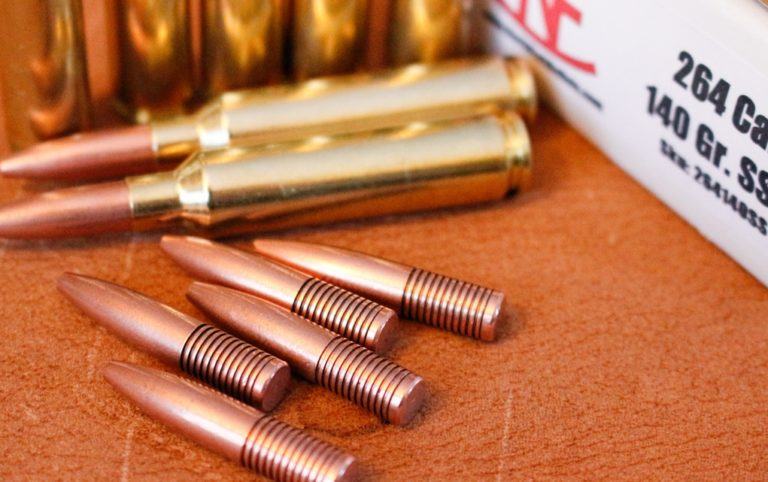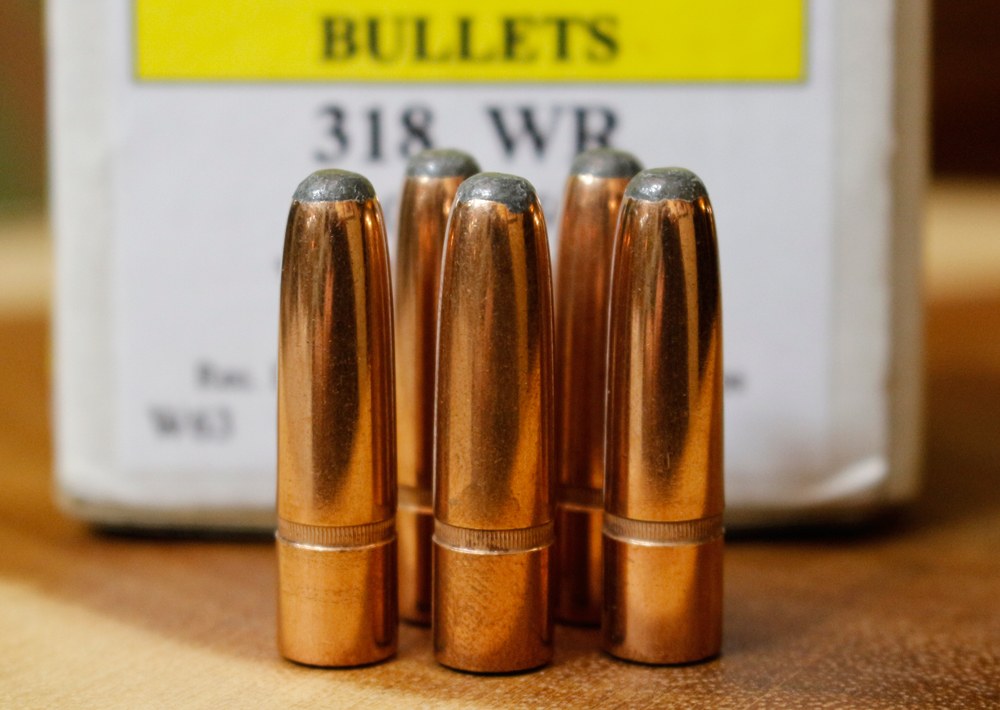

Choosing the appropriate bullet design is crucial for any task. Comparing and contrasting options will demonstrate the different applications for the various types. There is a tool for every job, and a job for every tool.

Each bullet design has its advantages and weaknesses, and depending on your shooting requirements, you might choose to employ several, if not all of the designs. Take for example a bullet that’s .308 caliber, 180 grains, with a flat base and a round-nose design. If you were to compare it to a flat-base, spitzer design, you could easily see how and why there would be a bit less bearing surface on the sharp bullet. After all, the bullet needs to interrupt the bearing surface to make room for the long, sharp nose.
Again, look at a spitzer bullet, but this time put a boattail on it, and you can see how the bearing surface (that portion of the bullet which engages the rifling) is further reduced based on the design itself, in turn affecting the pressure data.
Even closer scrutiny will reveal that when looking at the most aerodynamic bullet designs — bullets scientifically engineered to provide the least amount of air drag possible — you’ll find that the nose profile curve that gives the least resistance might not be the profile curve that behaves the best between chamber and muzzle. So, you need a balance of performance between interior and exterior ballistics. In other words, it’s no good having a bullet that defies the effects of gravity and wind drift if it doesn’t give repeatable results (accuracy) that allow the shooter to actually hit the target.

When you look at those models or benchmarks that verily define ballistic capability, and compare them with the projectiles available for the calibers and cartridges you own, it will help you make an educated decision regarding the range of projectiles for your hunting and shooting applications. These models are known commonly as the G1 and G7 models; G1 being a flat-base spitzer bullet, while the G7 is a more modern, sleek bullet design that correlates to the latest developments in bullet technology.
It’s like comparing a Ferrari coupe to a box truck. One would yield one set of data, which would seem radically impressive, yet if we put that Ferrari in its own class — say compare it to the Corvette design — the discrepancy won’t be so dramatic, but will be much more accurately represented.
You’ll find that most bullet companies tend to reference the G1 model; it’s universal and easily understood. That model, when used as a reference, yields impressive figures that work well in the marketing department. Any which way you want to slice it, when you compare these benchmark figures to the bullet you’re using, it will indeed give you a feel for both interior and exterior ballistics.
Longer bullets with better BC figures invariably take up more space in a cartridge case with a SAAMI-specified overall length dimension. That factor will “eat up” case capacity, and needs to be balanced out when it comes to manageable pressures. However, longer bullets give a desirable effect once they leave the barrel, but that’s for later.
In the interior ballistics world, the longer, sleeker bullets come with a particular set of issues that should be understood. The ogive of such bullets is typically of a secant curve profile, instead of the tangent ogive of the G1 model. Such are known as VLD, or Very Low Drag bullets.
While VLDs fly through air better than their tangent curve counterparts, they don’t engage the rifling as well. Berger’s Hybrid line of bullets, designed by ballistician Bryan Litz, uses a blend of secant curve from the nose through a good portion of the ogive, yet transitions into a tangent curve to best guide the bullet into the throat of the barrel.

The same thing can be said for the boat tail angle of the bullet. Looking at the interior section of the bullet’s path, a boattail has a base that is a measurable dimension smaller than caliber, and the burning gas from the powder charge surrounds the base of the bullet up to the bearing surface. If, as I’ve had happen in some of my rifles, this gas doesn’t exit equally around the muzzle or crown of the barrel, accuracy can be affected.
Should the crown be imperfect, gas will escape faster on one edge of the circle than the others, and you’ll see inaccurate results in as little as 100 yards. It’s certainly not the boattail bullet’s fault, and these symptoms can actually be masked by a flat-based bullet. However, as in the case of my Ruger .22-250, a re-crown will solve the problem.
As the boat tail angle becomes steeper, the internal problem can get magnified; just as the benefits can be magnified on the opposite end of the muzzle. Again, while the long-range shooting crowd relies on a low-drag, steeply boat-tailed bullet to flatten trajectory and retain velocity, it does come with a set of issues that must be dealt with in order to make things work properly.

This is the very dilemma that many hunters will face: While the long-range style bullet certainly shines for shots out past 300 yards, sometimes a flat-base bullet would better serve your needs, especially in the hunting fields. Again, a tool for every job, and a job for every tool.
I like a flat-base bullet, which will seal the gas best and keep things as equal as possible, for shots within 300 yards; this comprises about 95 percent of my hunting shots. For my long-range work, I totally rely on the multitude of spitzer boattails to make things go easier.
Editor's Note: This article is an excerpt from the Big Book of Ballistics, available at GunDigestStore.com.

Next Step: Get your FREE Printable Target Pack
Enhance your shooting precision with our 62 MOA Targets, perfect for rifles and handguns. Crafted in collaboration with Storm Tactical for accuracy and versatility.
Subscribe to the Gun Digest email newsletter and get your downloadable target pack sent straight to your inbox. Stay updated with the latest firearms info in the industry.

![Best Concealed Carry Guns In 2025 [Field Tested] Wilson Combat EDC X9S 1](https://gundigest.com/wp-content/uploads/Wilson-Combat-EDC-X9S-1-324x160.jpg)


![Best 9mm Carbine: Affordable PCCs [Tested] Ruger Carbine Shooting](https://gundigest.com/wp-content/uploads/Ruger-Carbine-Shooting-100x70.jpg)
![Best AR-15: Top Options Available Today [Field Tested] Harrington and Richardson PSA XM177E2 feature](https://gundigest.com/wp-content/uploads/Harrington-and-Richardson-PSA-XM177E2-feature-100x70.jpg)
